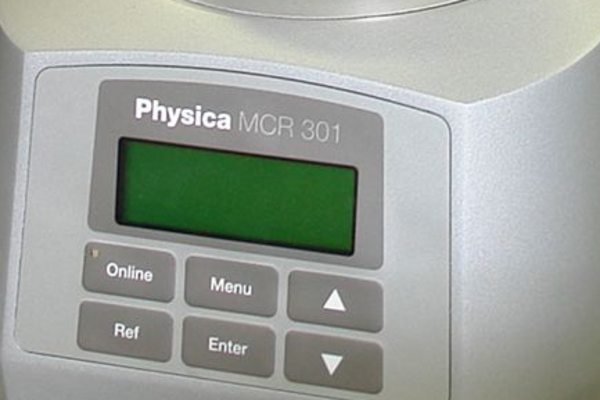Viscosity-temperature profile (VTP)
Year of publication: 2007
For a slide bearing or gear design, the specification of viscosity at 40° C and 100° C or the calculation of viscosities at other temperatures on the basis of the viscosity index (VI) is usually not sufficiently informative.
Often equipment is operated under widely varying climatic conditions or at different temperatures. At cold start, the oil is viscous. Later, when the operating temperature is reached, it is thin-bodied. To design bearings, lubrication holes, pump pressures, tooth widths, etc., a designer then needs the actual, dynamic viscosity at precisely these limit temperatures. Often, the approximate values determined using calculation methods based on Walther's straight line are too inaccurate.
To create the viscosity-temperature profile, measurements are carried out at intervals of 10° C in the temperature range from -30° C to +110° C. The results of these measurements are available in tabular form on the one hand and in graphical form on the other hand, both on the OELCHECK laboratory report and at https://lab.report.

Die Bestimmung des Viskositäts-Temperatur-Profils
In the Anton Paar rheometer used at OELCHECK, a small amount of lubricant (2 ml) is introduced into a precisely defined and temperature-controlled measuring gap between the rotor and stator. The rotor is driven by an air-bearing motor. The oil sample in the measuring gap opposes this rotary motion with a resistance. This resistance is proportional to the viscosity, is recorded via the resulting force effect and converted into the dynamic viscosity.
"Viscosity" also for lubricating greases!
The same test geometry can also be used to determine the "apparent" dynamic viscosity (also called shear viscosity) of lubricating greases. This is important in grease selection with regard to the stiffness of the grease and for calculating the starting torque and efficiency of a bearing. The higher the apparent viscosity, the more energy is lost when a bearing moves and the higher the heating of the bearing point generated by this frictional energy. The rheometer can also be used to quickly and easily assess whether a used grease has become drier and thus stiffer, e.g. due to bleeding and oil losses.





